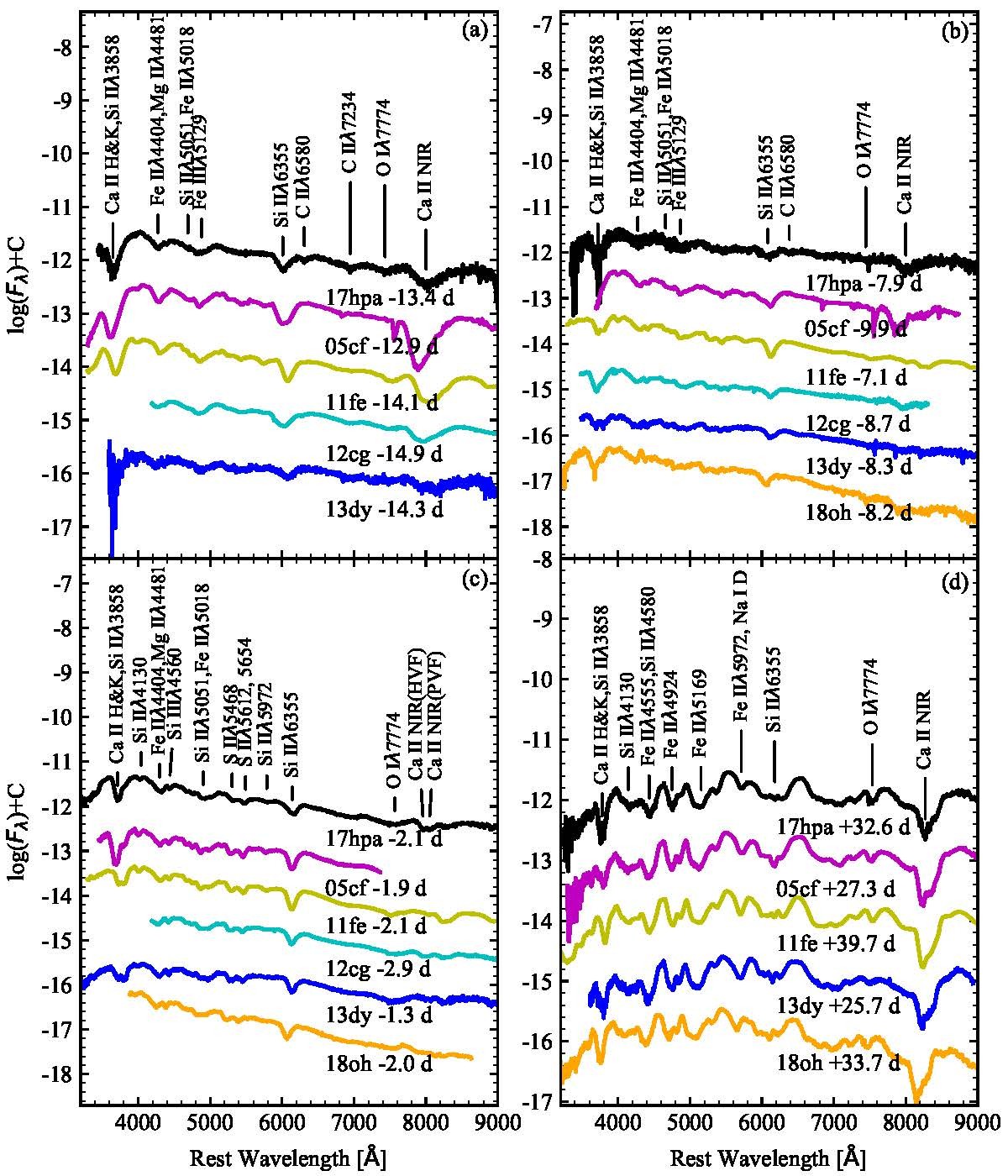Type Ia supernovae (SN Ia) are widely believed to originate from thermonuclear explosions of carbon-oxygen white dwarfs, and their essentially identical peak luminosities make them indicators of extra-galactic distances and important probes for studying cosmic expansion. There is a diversity of Type Ia supernovae, and the possibly different progenitor systems and explosion mechanisms may affect their accuracy as distance probes. The presence of unburned carbon in Ia supernovae is determined by a single combustion and can be used as a diagnostic tool to probe their explosion mechanism. Theoretically, about 40% of Ia supernovae should be able to detect carbon in their early spectra, but the sample of carbon-rich .SN Ia is somewhat modest
Researchers from the Optical Astronomy Research Laboratory of Xinjiang Astronomical Observatory with their collaborators from domestic and abroad have confirmed that SN 2017hpa is a carbon-rich type Ia supernova. The analysis of the supernova spectra and photometric data reveals that SN 2017hpa presents a normal photospheric expansion velocity at the maximum light with a large velocity gradient. The results are published in the Astrophysical Journal (ApJ, 2021, 909, 176).
The researchers jointly utilize multiple telescopes conducting multi-band photometric and spectroscopic observations of the source. The photometric observations range from 13.3 days before to 143.5 days after the maximum light. A total of 26 spectroscopic observations were obtained covering from 14.1 days before to 86.6 days after the maximum light. By using light curve template fitting and flux density distribution analysis, the researchers obtained the light curve shape parameters, absolute magnitude and quasi-bolometric luminosity of the supernova. The gaussian fitting is employed to estimate the velocities of the photospheric and some intermediate mass elements of SN 2017hpa from the local absorption profiles in the spectra. The results above suggest that the supernova may originate from the violent merger of carbon-oxygen white dwarfs, and the large velocity gradient of this supernova may be related to the extensive mixing of the SN ejecta.
Figure 1 Observed UV and optical light curves of SN 2017hpa.

Figure 2 Spectra of SN 2017hpa at four different epochs, compared with spectra of SNe 2005cf 2011fe, 2012cg and 2013dy. Correction of reddening and redshift of the host galaxy had been done for all of the given spectra. The spectra have been shifted vertically for clarity.
Contact: ZENG Xiangyun
Xinjiang Astronomical Observatory, Chinese Academy of Sciences
Email: zengxiangyun@xao.ac.cn